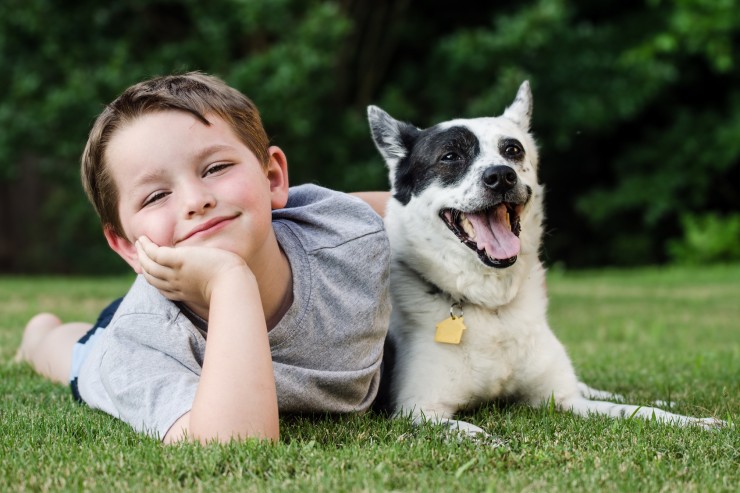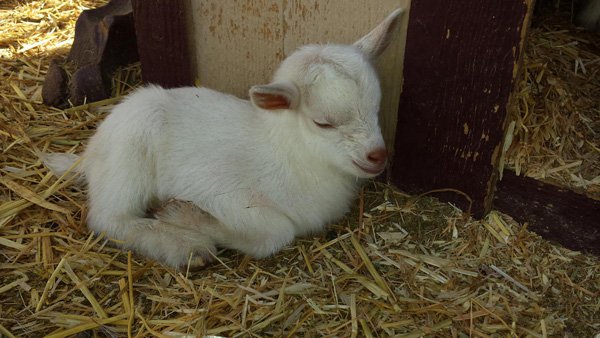

Whether you own a dog of your own or not, if you have children of primary school age it is really important to teach them the basics of how to behave around dogs of all types, how to read their signals, and how to approach and treat dogs.
This is vitally important because it might actually help to keep your child safe in the future, even at times when you are not around yourself, and can help to ensure that your child does not have a bad experience with dogs early on, which makes them wary or nervous around dogs for the rest of their life.
In this article, we will share ten important tips that all children of primary school age should know about dogs, and be able to demonstrate in their behaviour when dogs are around. Read on to learn more.
One of the first and most important things to teach children as soon as they are old enough to understand it is that you should never approach or try to pat a strange dog without first asking the dog’s owner. The owner will of course know their own dog and how they feel about strangers and children, and so, if they feel that their dog is safe to approach.
Always ask first, and don’t be upset or disappointed if the owner says no to saying hello to their dog-there will be a good reason for this!
If you do get given the ok to say hello, don’t run at the dog or approach them in a noisy, boisterous manner, as this may scare the dog and cause them to snap. Approach from the side rather than head on as this is considered to be polite and not dominant, and never back a dog into a corner where they cannot get away if they want to.
So the owner says you can say hi to their dog, but the dog’s body language or the signals they are giving out say otherwise-always pay attention to these! In order to be able to say hello to a dog safely and without stressing the dog out, both the dog and the owner must give the ok for this-and the ok from the dog will come in the form of their body language and responses!
If the dog is wagging their tail and sniffing at you happily, say hello! If they appear scared, are trying to get away or don’t want to look at you, think again!
However, don’t just look for a wagging tail on its own-also look at the rest of the dog’s body language, including their face, teeth, fur and the way they are standing, as a tail that is slowly waving from side to side, accompanied by other signs, may not be friendly at all!
Even the most friendly and sociable of dogs will get to the point where they don’t want to play or stay with you anymore, and it is important to keep an eye on the dog’s body language while patting them to see the point at which this happens, or identify if the dog doesn’t like the way you are petting them.
If you can see that a dog is nervous or scared of you, your instinct might be to give them a big cuddle to help them to feel better. However, the dog in question won’t know that this is your intention, and will just see a stranger approaching them with arms open, which might make them more frightened than they were in the first place!
If a dog is scared or nervous, they may bite you in self-defence, even if you were not really any threat to them-always let a nervous dog come to you, and don’t approach them too closely until they are ready.
Dogs love food, and one of the best ways to get a dog to show an interest in you is to give them a treat! However, you should never give a dog something to eat without asking the owner first, for a range of reasons. First of all it is really bad manners to give someone’s dog something without asking, but apart from this, the dog may not be allowed treats because of a health condition or because they are on a restricted diet-or what you are offering might simply not be suitable for dogs at all.
All dogs should be taught to accept having their food or a treat taken away from them if this is absolutely necessary, but dogs should not have things taken away from them just for the sake of it-after all, you wouldn’t like it if someone did this to you! Everyone should be able to eat in peace without being bothered or risking losing their meal, and the same goes for dogs-don’t try to take their food from them, because this is both bad manners and may lead to a bite!
Don’t creep up on a sleeping dog or approach them so quietly that they wake up all of a sudden to see you standing over them-a shock when waking up might frighten the dog to the point that they bite you before they even realise what they are doing.
All dogs should be well mannered and able to follow basic commands, and they should not jump up or be pushy around anyone-even children! The owner of the dog will be responsible for the training and management of the dog, and it is really important to make sure that you follow their instructions in terms of what they are allowed to do and not do, and do not lead the dog into bad habits!
Finally, remember that dogs are living, breathing animals that have feelings, likes and dislikes like everyone else-and as children get older, the different personalities of each dog that they meet will become apparent.
Always treat dogs with kindness and respect, and never pull them around, tease them, or otherwise do anything that might upset them or place you in danger.
 Septic Arthritis In Rabbits Explained
Septic Arthritis
Septic Arthritis In Rabbits Explained
Septic Arthritis
 Cats And Spinal Injuries
Cats And Spinal I
Cats And Spinal Injuries
Cats And Spinal I
 What Is The Rspb’s Red List?
What Is The Rspb’
What Is The Rspb’s Red List?
What Is The Rspb’
 Bed bug killer sprays- a convenient way of getting rid of bed bugs
Bed bug killer sprays- a convenient way of getting rid of
Bed bug killer sprays- a convenient way of getting rid of bed bugs
Bed bug killer sprays- a convenient way of getting rid of
 The Delightful Peterbald – An Extraordinary Hairless Cat
The Delightful Pe
The Delightful Peterbald – An Extraordinary Hairless Cat
The Delightful Pe
Copyright © 2005-2016 Pet Information All Rights Reserved
Contact us: www162date@outlook.com